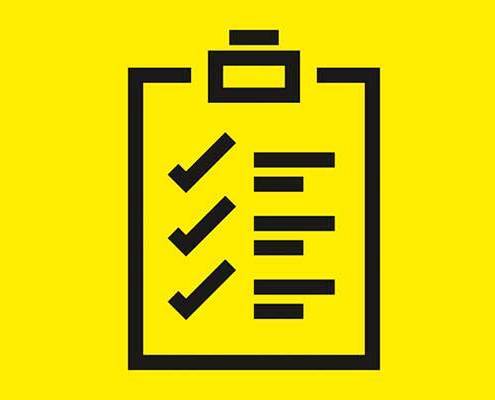How to remove chlorpropham from potato storerooms
The use of chlorpropham (CIPC) is no longer approved within Europe to inhibit potatoes from sprouting. Potato storage spaces need to be thoroughly cleaned before storing each new crop. This includes the overhead and underfloor channels, as well as the storage equipment and machinery. Sweeping storage rooms is not enough to comply with CIPC cleaning requirements, and thorough cleaning needs to be regular occurrence.

Chlorpropham ban in Europe – removing residues
In 2019, the EU Commission decided not to renew the approval for the anti-sprouting treatment, chlorpropham. The PVC (Potato Value Chain) recommended the cessation of using the agent. The sell-off period was valid until January 31, 2020, and the use-by period ended on October 8, 2020. This meant that all residues were subject to disposal on this date. 22 plant protection products are affected by this, specifically:
Neo-Stop Starter, Neonet Start, Gro-Stop Ready, Polder Hot Fog, MitoFOG HN, Polder basic, Kartoffel-Keimstop, Polder Dust, Neo-Stop L300, NeoNet 300 HN, Polder Ultra 600, MitoFog 600, Gro-Stop Electro, Gro-Stop Basis, Cipc 300 EC, Keimstop 300 EC, Gro-Stop 1% DP, Kartoffelschutz Tixit Neu, Neo-Stop, Neonet Dust, Neo-Stop L500 und Gro-Stop Fog.
Removing chlorpropham correctly: dry and wet cleaning in the potato storage room
Removing chlorpropham is a huge task. To ensure you don’t exceed the maximum CIPC residue levels and to therefore have potato storage without chlorpropham, the storerooms and all other relevant areas must be completely cleansed so that no traces of CIPC remain. Otherwise, there’s the risk of not being able to sell the crops and these having to be destroyed. To achieve CIPC-free storage spaces, it’s recommended to carry out a combination of both dry and wet cleaning.

Wet and dry vacuum cleaners
A suitable vacuum cleaner with an extension hose ensures that dust and any CIPC particles don’t get kicked up, but are instead picked up by walls and other surfaces. For stubborn dirt, mechanical aids such as brushes or scrapers help.
The vacuum cleaner filter needs to be cleaned regularly and changed as needed. To make the work easier, models with automatic filter cleaning are a good idea. The dirt collected by the vacuum cleaner can be disposed of in dirt collection bags.

Sweepers
Floors can be effectively treated with sweepers or a vacuum cleaner with a wide suction nozzle.
Depending on the size of the area to be cleaned, hand-held sweepers, for small areas, or ride-on sweepers for larger areas can be used.

Hot water high-pressure cleaner
Hot water high-pressure cleaners are used for ‘wet-cleaning’, and the water temperature should be at least 70 °C. The pressure should be set so that contaminated surfaces are not sprayed too strongly so fewer aerosols are formed.
Heavily contaminated areas or areas that are difficult to access like pressure chambers, fans or evaporators, can be effectively cleaned using the steam from hot water high-pressure cleaners or from a steam cleaner.

Surface cleaners
For floors, surface cleaners with suction in combination with high-pressure cleaner make light of hard work. Any contaminated water is immediately sucked into the device. According to the UK Environment Agency, pesticide residues may not be discharged into sewage systems. This means that wastewater must be collected and disposed of.
A lasting legacy: The CIPC antimicrobial residues last for several years
According to current research, there’s still enough active ingredients in the buildings where CIPC was used so that goods stored years later are still contaminated. The maximum residue level allowed can therefore only be followed if extensive cleaning measures are also carried out in the coming years before crops are stored. Continuous ventilation of the storage rooms while they are empty and storing mobile storage equipment outdoors are also helpful measures in reducing residues. The use of chemicals is not advisable in cleaning and removing chlorpropham. This is because instead of removing it, the CIPC can decompose into toxic metabolites.

How to remove chlorpropham from potatoes – step-by-step instructions and clear documentation
In addition to the appropriate cleaning techniques, systematic procedures and documentation are essential. In this way, it can be demonstrated that all specifications were met during an inspection. This is particularly relevant for customers in potato processing, for example. The documentation of the cleaning measures should be in writing and with photographic evidence, including the location, time and type of cleaning.
- In general, the rule of working from top to bottom applies, starting from the overhead duct and ceiling, through walls and equipment to the floor and underfloor duct.
- During all cleaning operations, users must wear personal protective equipment (PPE).
- It’s crucial that important components aren’t overlooked during set up, such as conveyors, case fillers, fans or airways.
- Mobile storage equipment should be taken outside and cleaned. Weather additionally influences the reduction of CIPC contamination.
- Transport vehicles must also be cleaned of possible residues with hot water using a high-pressure cleaner.
- At the end of each use, all cleaning tools should be cleaned with the high-pressure washer.
Tip – remove chlorpropham using a checklist for a better overview:
In order to provide plausible proof of chlorpropham removal, a checklist including photo documentation is a good method of proof. This list should include all the facilities that need processing. This includes pressure chambers, ventilation technology, ventilation towers, overhead and underfloor ducts, walls, parts of the building, floors, ceiling, boxes, trailers, receiving equipment, conveyor belts, loading equipment, refrigerators, fans, circulating fans, or wooden beams used as mobile walls.
If equipment needs replacing, it’s advisable to clean the entire warehouse thoroughly beforehand to not transfer any residues to the new equipment.











